The HTC One M9 Review: Part 1
by Joshua Ho on March 22, 2015 7:00 PM EST- Posted in
- Smartphones
- HTC
- Qualcomm
- Mobile
- Snapdragon 810
- One M9
System Performance: Snapdragon 810
We've been able to test Snapdragon 810 before, but it was only in the context of Qualcomm’s developer platform tablets and phablets, which have a higher possible TDP than shipping devices, and generally doesn’t have any need for battery life as these devices usually spend all of their time plugged into a charger. Thus, the One M9 represents our first experience with a Snapdragon 810 device with shipping software and hardware. HTC noted during the review process that our devices were running non-final software, and we received an OTA update that significantly changed the thermal throttling characteristics of the device, but this seems to have only affected performance in situations where the SoC was nearing maximum acceptable skin temperatures as performance in these benchmarks were relatively unchanged.
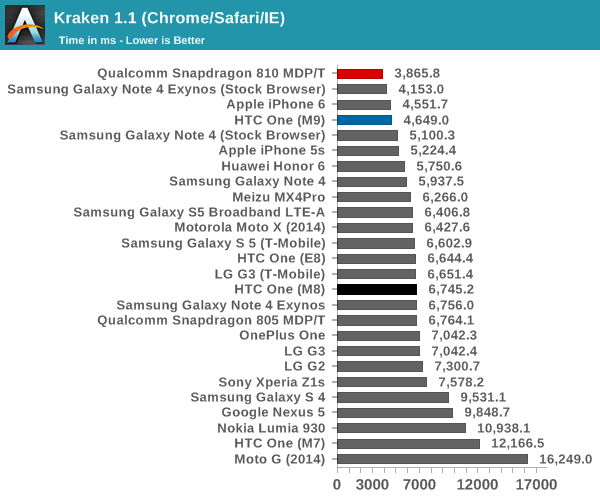
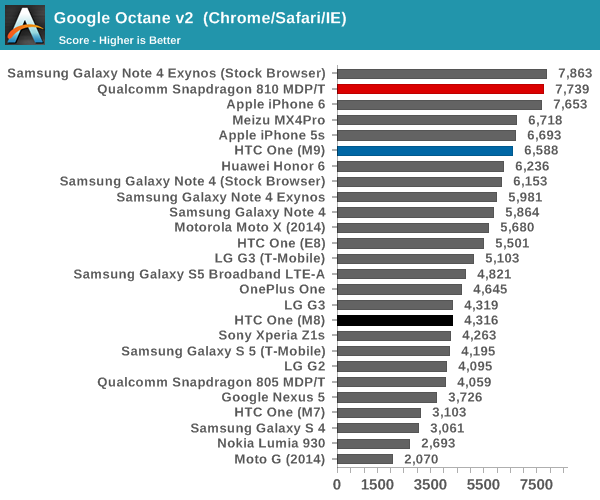

In our first few browser tests, we can see that the One M9 posts dramatically lower performance than the Snapdragon 810 MDP/T, which seems rather strange. However, using CPUBurn to try and load just a single thread reveals that without HTC’s CPU cheats, it’s basically impossible to get the A57 cluster beyond 1.5 to 1.6 GHz. It's important to emphasize that this isn't new behavior, as this was present on pre-release software as well, which means that HTC didn't do this at the last minute.
For those that are unfamiliar with how HTC's CPU cheats work, HTC continues to rely on some level of benchmark detection, and it seems that when a benchmark is detected it enables a "High Performance" mode in the developer settings with no option to disable this mode. It's possible to work around this mode by using benchmarks that evade such detection mechanisms (and we do), but it's also possible manually toggle this mode on and off if a benchmark isn't detected. This benchmark mode appears to relax throttling constraints, but more obviously it enables one to go from a maximum of 1.6 GHz to the rated 2.0 GHz of the Snapdragon 810 for extended periods of time. However, even in this mode we can see that a sustained load of a single thread on the A57 cluster will cause the cluster to throttle to 1.7 GHz in this mode, while without this mode enabled we see that a single thread will eventually cause the A57 cluster to clock around 1 to 1.2 GHz. If the normal governor does allow the SoC to reach 1.9 GHz, I can't really perceive the amount of time that it does reach such a speed.
The most concerning result is WebXPRT, which is a bursty workload that runs over a few minutes, which suggests that we’re already seeing thermal throttling in the M9.

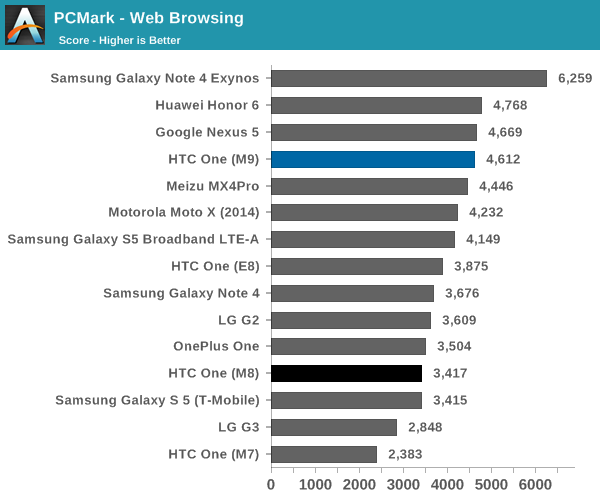
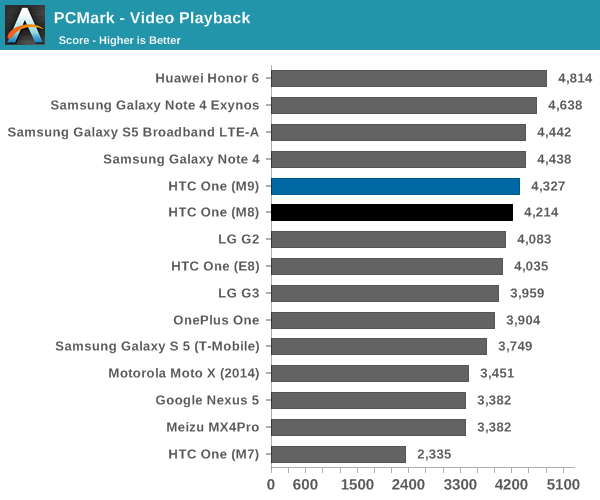
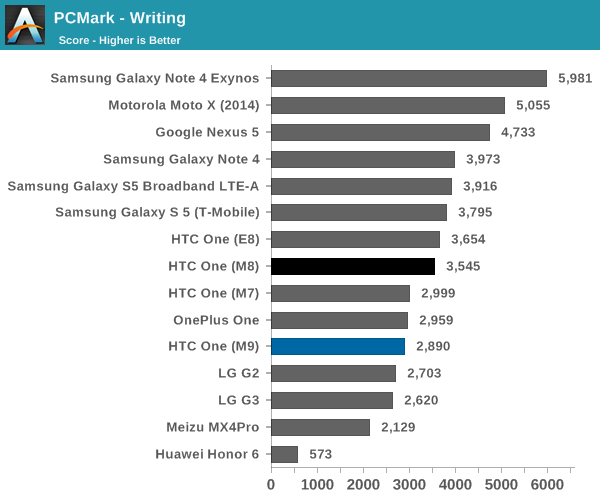
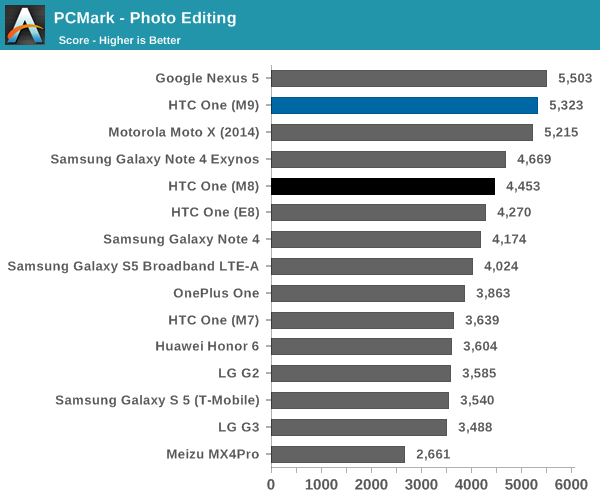
In PCMark, which is a benchmark that tends to focus strongly on race to sleep scenarios, we can see that the Snapdragon 810 appears to significantly trail behind the Exynos 5433, which is on a similar process node. It's hard to say whether this is due to the scheduler configuration or differences in the physical design of the SoC, but at any rate this is another concerning performance from the SoC of the One M9.
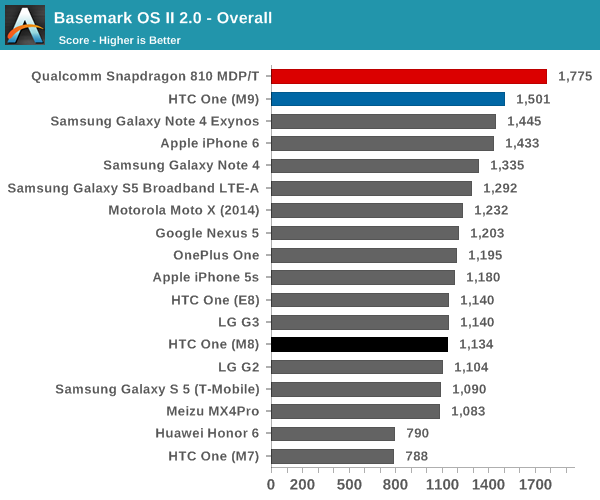

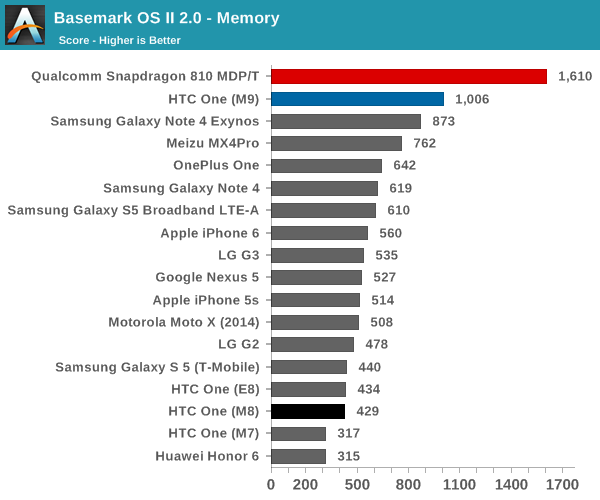
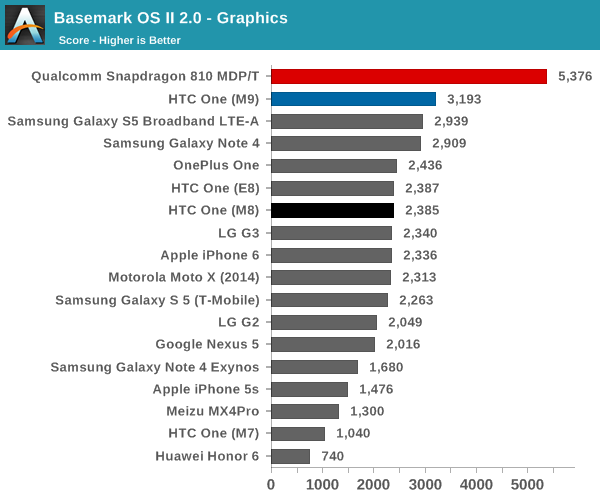
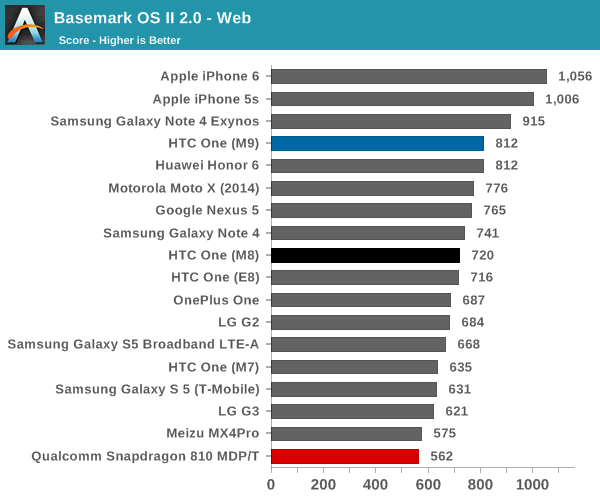
Moving on to the general system performance tests, we see that the M9 delivers a reasonable improvement in performance over the M8, but most of the difference seems to come from the GPU and storage performance rather than anything else that was tested. Overall, the Snapdragon 810 really isn’t off to the best start in any test we’ve thrown at it so far. To see if Snapdragon 810 has any redeeming features we’ll look at GPU performance next.


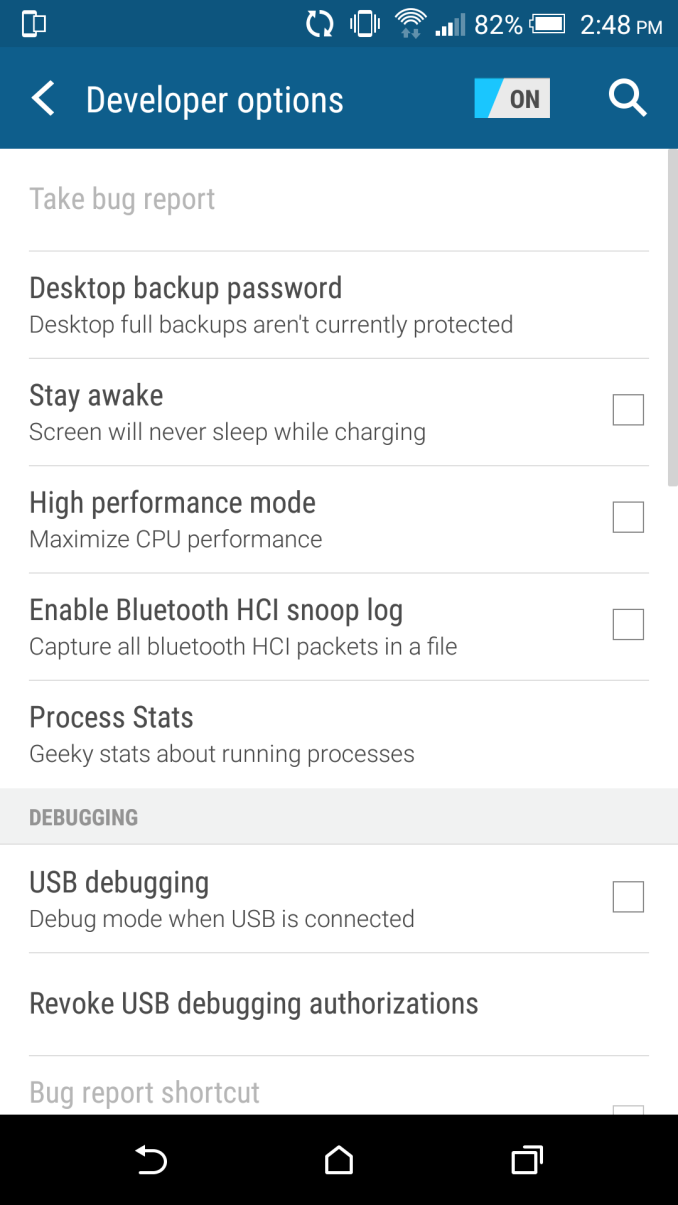








132 Comments
View All Comments
Shadowmaster625 - Monday, March 23, 2015 - link
With 1080p snapdragon 801 phones regularly pricing in at $300, this phone clearly offers nothing to justify twice as much money. Why would anyone want this over an M8 for half the price? The battery dont even last as long. Wow.tipoo - Monday, March 23, 2015 - link
I wonder if it sticking far from its max clock speed has to do with the "fix" for its initial overheating issue, imaged below. I wish Android SoC makers would stop pursuing stupidly high clocks that they throttle back from in seconds. This whole thing might be confirmation that Samsung moved away from Snapdragon for the throttling/overheating.http://www.droid-life.com/wp-content/uploads/2015/...
testbug00 - Monday, March 23, 2015 - link
Yes, not running the SoC at a level where the heat dissipation was to high for the case to handle fixed problems.Anyhow, the 810 has no thermal problems. Phone manufacturers cramming a 10W+ SoC into a phone and than people expecting it to be able to draw 10W+ over an extended period of time without causing heat issues are the problem.
Tigran - Monday, March 23, 2015 - link
Dear AnandTech, two questions:>>> For those that are unfamiliar with how HTC's CPU cheats work, HTC continues to rely on some level of benchmark detection, and it seems that when a benchmark is detected it enables a "High Performance" mode in the developer settings with no option to disable this mode. It's possible to work around this mode by using benchmarks that evade such detection mechanisms (and we do), but it's also possible manually toggle this mode on and off if a benchmark isn't detected. <<<
1) Was High Performance mode disabled in all CPU/GPU tests performed in Part I?
>>> We'd normally go into depth about the PCMark, GFXBench, and Basemark OS II battery life results at this point but the new software update precludes this from happening at all as all three could be significantly impacted by changes to thermal throttling. In GFXBench, I saw a change from 1.73 hours to around 3 hours of battery life on our infinite T-Rex rundown test, and in PCMark I noticed that the M9 reached about 40C, which brings it close enough to the new update's maximum skin temperatures that all three tests must be re-done. <<<
2) So are we to see infinite GFXBench test with actual fps in Part II? And why must you re-done tests because of the thermal throttling - isn't it going to be constant part of M9's software? Are you going to disable this thermal throttling in your following tests?
JoshHo - Monday, March 23, 2015 - link
We do not enable HTC's high performance mode for performance benchmarks but we try to avoid throttling the SoC.Tigran - Monday, March 23, 2015 - link
It seems quite reasonable with high performance mode off, but if you disable throttling (enabled by M9's software) will it represent M9's real performance?JoshHo - Monday, March 23, 2015 - link
We can't disable the throttling mechanisms without root. For performance benchmarks (not thermally limited) we will often use cooling pads to try and avoid throttling.Tigran - Monday, March 23, 2015 - link
So you don't root and disable throttling, do you? But I don't understand what's the purpose of using cooling pads, if it doesn't represent real situation of the users. Do you allways use cooling pads in tests "not thermally limited"? I'm afraid I don't know which test are thermally limited and which are not.Sorry for asking many questions, I'm a tech blogger from Russia and often quote your reviews (I believe they are the most professional and unbiassed).
JoshHo - Tuesday, March 24, 2015 - link
In general it isn't necessary to use additional cooling for most phones, but we do this in order to try and standardize the test conditions because we can't standardize room temperature and what surface the phone is on well enough. The tests where we don't do this are part of the battery life tests, which is why throttling is often seen in those tests.Tigran - Tuesday, March 24, 2015 - link
Thanks a lot for your answers, Joshua. Looking forward to see Part II, with infinite tests and SD810's long-term real performance.